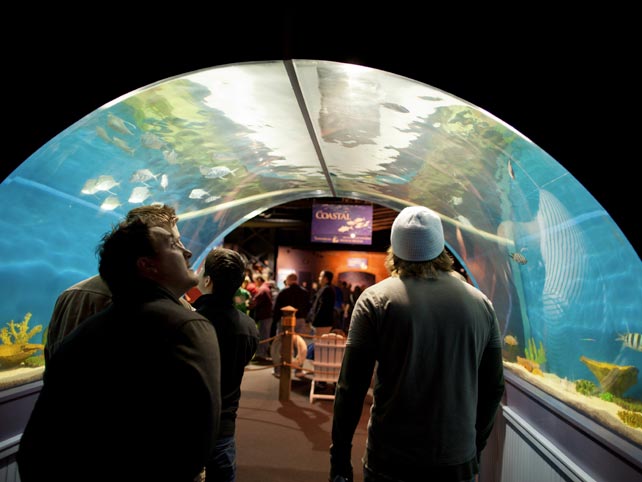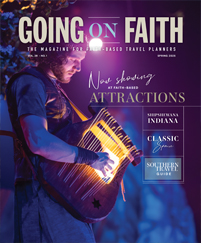
Courtesy Greater Cleveland Aquarium
The closest oceans are hundreds of miles away, but travelers can explore marine environments in plenty of places around the Midwest.
At aquariums throughout the region, visitors can immerse themselves in underwater worlds. You don’t need a wet suit to explore these habitats, just a good pair of walking shoes and a healthy dose of curiosity.
Aquariums make great destinations for tour groups, and the Midwest boasts a variety of aquatic institutions that will satisfy a range of curiosities. From the native fish and wildlife of the Mississippi River to the exotic creatures that live in the waters of the South Pacific, thousands of species of animals can be found there.
The aquariums of the Midwest include the Shedd Aquarium in Chicago — one of the country’s best — as well as newly opened aquariums in Cleveland and Kansas City. And the Ak-Sar-Ben Aquarium in Nebraska and the National Mississippi River Museum and Aquarium in Iowa give visitors a look at the creatures that live in the waters close to home.
Ak-Sar-Ben Aquarium
Gretna, Nebraska
Along the banks of the Platte River in eastern Nebraska, Schramm State Recreational Area is the site of the small but mighty Ak-Sar-Ben Aquarium.
“We’re a freshwater, native-fish aquarium,” said director Tony Korth. “It’s all Nebraska animals: fish, turtles, frogs and stuff. We have 60 species of Nebraska fish.”
The emphasis on Nebraska wildlife comes from the name of the aquarium. Ak-Sar-Ben is a moniker used by a community group that raised money to open the aquarium, and it represents Nebraska spelled backward.
Visitors to the aquarium will see bass, sunfishes, walleye, northern pikes and a variety of species of catfish. There are some extra-large residents as well, including a 60-pound blue catfish and an 80-pound snapping turtle.
When groups come to Ak-Sar-Ben, they often see a nature film in the theater or do a scavenger hunt through the museum’s exhibits. Many also take advantage of the surrounding recreational area.
“The park is a retired fish hatchery,” Korth said. “So we have waterfall displays on the pond here, and fish-pellet machines so that you can feed the fish. There’s also a hatchery museum that is open in the summer.”
http://outdoornebraska.ne.gov/fishing/programs/aquaticed/aquarium.asp
Greater Cleveland Aquarium
Cleveland
The Greater Cleveland Aquarium opened in January, making a big splash on tourism in the Buckeye State. The attraction, Ohio’s only freestanding aquarium, sits on the West Bank of the Flats in the Powerhouse, a former utility company building that is now a center of Cleveland entertainment and recreation.
The first phase of the 70,000-square-foot aquarium includes 1 million gallons of water in 42 tanks that are arranged to take advantage of the historic building’s ambiance. Designers created an underwater atmosphere with exhibits such as the Sea Tube, a 145-foot walk-through tunnel that allows visitors to see marine life swimming around and above them on all sides.
Exhibits at the aquarium feature a wide variety of aquatic animals, from Ohio-native brook trout to the ferocious piranhas of the Amazon River. The Ohio Lakes and Rivers exhibit has fish and wildlife from Lake Erie and the streams and rivers of the state, among them darters, sunfish and a madtom catfish.
The Weird and Wonderful exhibit is set inside the old coal tunnels of the Powerhouse and has a collection of some of the strangest-looking ocean creatures from around the world. Guests can touch sharks, rays, sea stars and crabs in the interactive Coastal Zone. And a special exhibit called Shark Tank houses numerous specimens from the Florida coast, among them a seven-foot
sand tiger shark.
www.greaterclevelandaquarium.com










